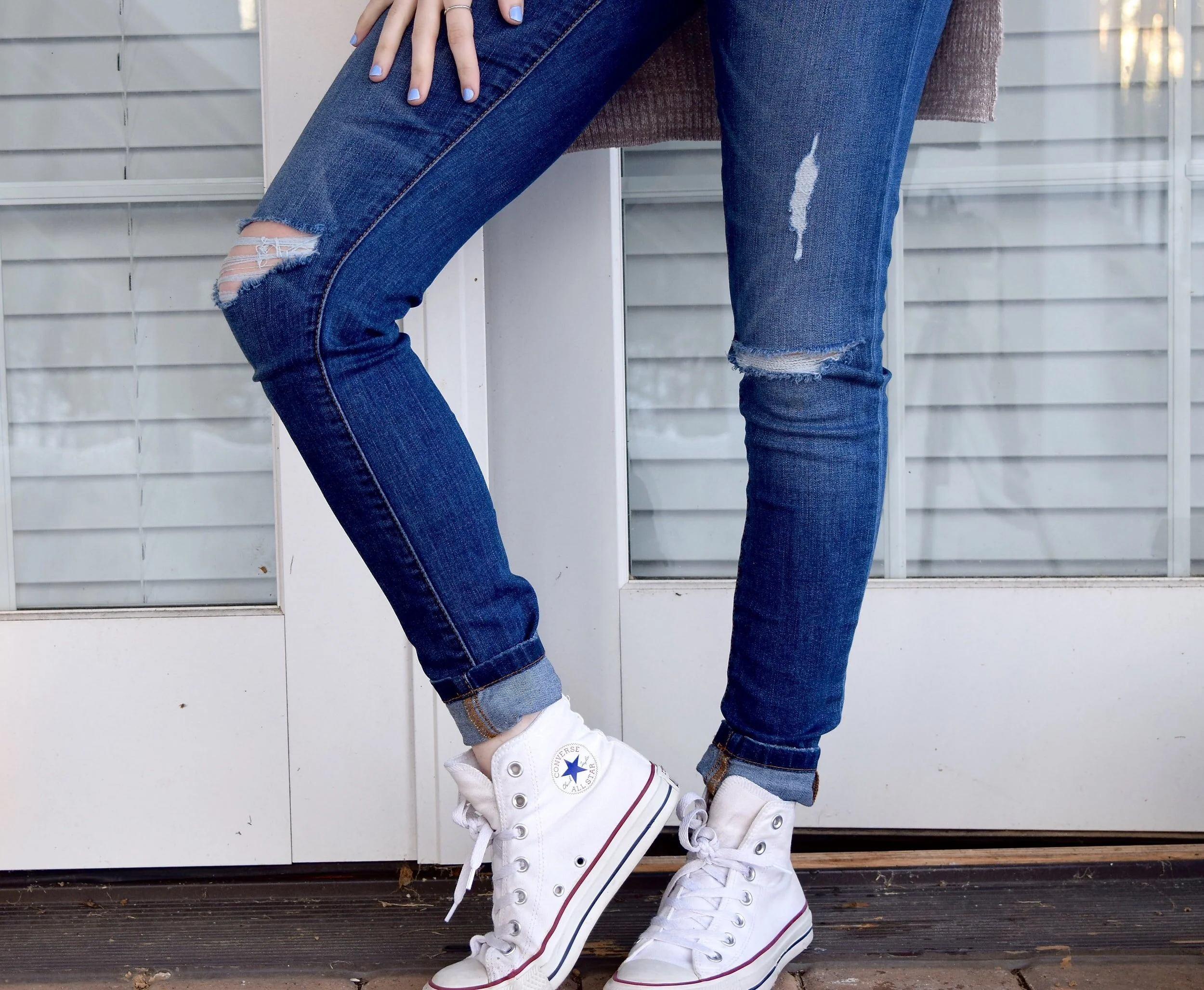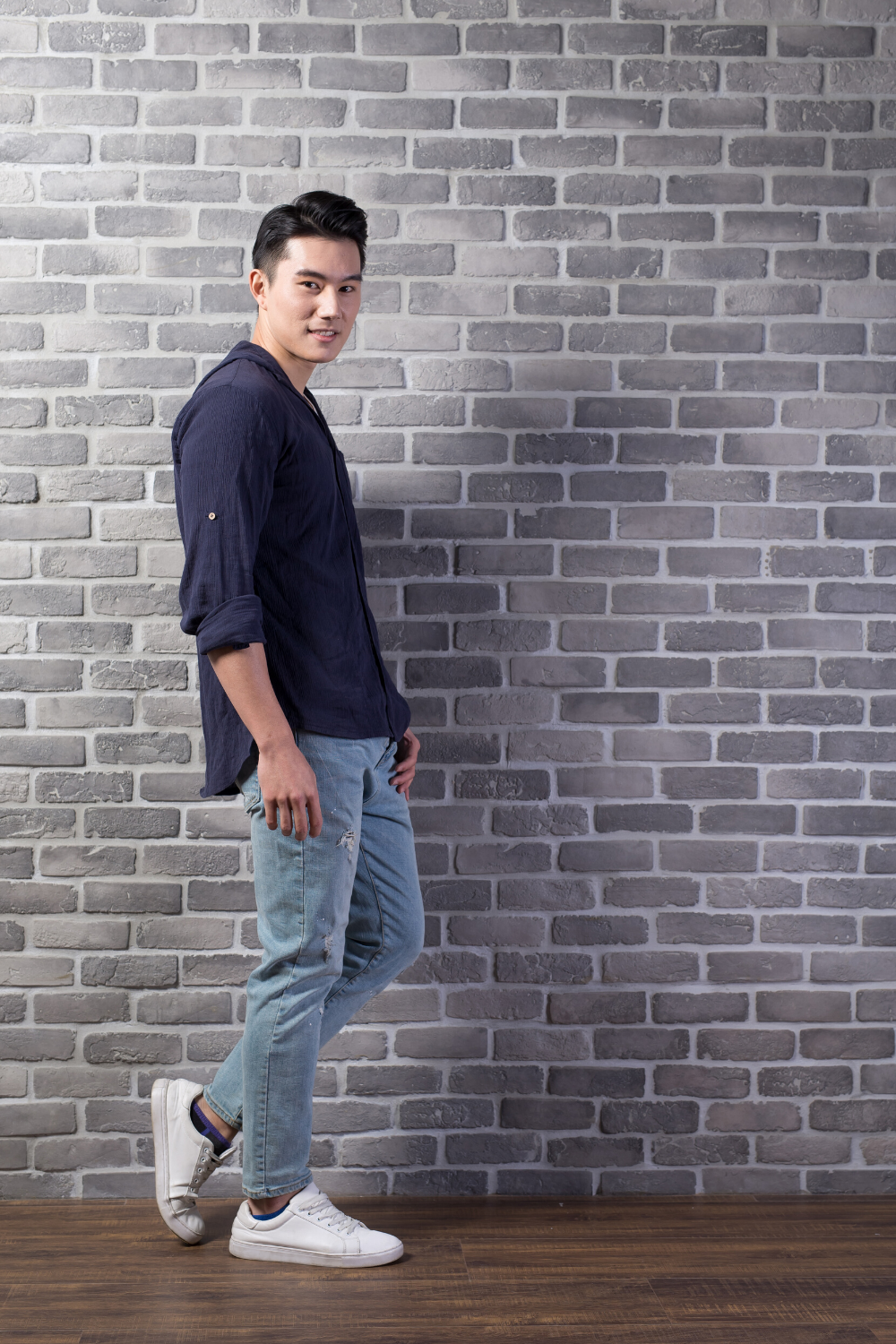What should you do if you are in between pant sizes?
Our friends have started asking us questions about clothing fit. We thought it would be fun to share their questions and our answers with you.
This week, Mike asked me a question about what pant sizes mean and what happens if you “size up” if you are in-between pant sizes:
Hi Chris,
I'm thinking of buying a pair of 7 For All Mankind skinny jeans. I'm trying to decide if I should buy a size 32 or 33.
I work out a lot, so I have larger thighs than what most jeans are made for. I love wearing skinny jeans, but I am concerned that the thighs might be too tight in a size 32. I am also concerned that if I size up, the leg won’t get much bigger in a skinny jean as it would in an athletic jean.
I'm wondering how much a change in waist size affects the room in the pant legs?
—Mike
Here’s the short answer: pant measurements between sizes for most men’s pants follow “sizing rules”:
The waist changes by one inch between sizes
The hips change by one inch between sizes
The thighs change by half an inch between sizes
The knees change by half an inch between sizes
The front rise (where the pants hit your belly) change by a quarter inch between sizes
The leg length does not change between sizes
The leg opening, where the pants meet your ankles, is the only part of the pant that depends on style:
For straight and bootcut pants, the leg opening changes by half an inch between sizes
For all other styles, the leg opening changes by a quarter inch between sizes
Knowing how much extra room you get in the leg when you size-up is useful, but is half an inch extra in the thigh enough room to matter?
How Pant Sizing Works
To know if sizing up is the right move, it’s helpful to know why sizing works the way it does.
The purpose of sizing is to make a pant bigger or smaller without changing its shape.
Sizing clothing is like making Russian stacking dolls: the smaller dolls fit perfectly inside the larger dolls because they have the exact same shape.
Sizing rules were created to keep the shape of a pair of pants about the same from size-to-size. The rules do this because they change smaller parts of the pants by less than bigger parts of the pants between sizes. This is known as keeping the sizes in a pant line proportional.
The waist changes by twice as much as the thighs because your thighs are about half the size of your waist. By adding only half an inch in the thigh between sizes and an inch in the waist, the shape of pants stays mostly intact.
If the thighs didn’t change by half as much as the waist between a size 32 and a size 33, then the shape of both pant sizes would look completely different.
To show you why, we’ve made two interactive “sizing” drawings you can play with. In both drawings, we’ve outlined a pair of Levi’s 502 Taper Fit Jeans in a size 32. The first drawing lets you size up and size down by increasing every pant measurement by an inch between sizes. The second drawing lets you size up and down with the sizing rules.
Notice a difference? The shape is very different as you size up and down in the first interactive drawing because the sizes aren’t proportional to one another. In the second interactive drawing, each size looks like a slightly bigger cousin of the size 32.
For a more in-depth write-up on sizing, check out our article from last summer.
Should you “Size Up” if you’re “In-Between” Sizes?
Here’s my advice to Mike: if the size 32 fits well around the waist but the thighs are too tight, sizing up will be more trouble than it’s worth. It’s better to find a pair of pants that is the right shape for you.
Finding a good pair of pants is like playing with a baby block shape sorter. If you try to fit a square shape through a circular hole, chances are it won’t fit.
The same goes for pants: if you buy pants that are perfect around the waist but tight around your thighs, sizing up to get an extra half inch around the thighs is usually not enough space to make a big difference. Even if it is, because the waist jumps by a whole inch, chances are you will have a waistband gap because the waist is too big in the size up.
Many people will tell shoppers who are in-between sizes that they should size up and have their pants taken in around the waist. I disagree. Tailoring requires extra time, money, and uncertainty that most shoppers cannot afford. Plus, if the alteration is big enough, tailoring may change the style of your pants significantly.
Finding pants that fit well means finding pants that fit your shape everywhere, not just in the waist or thighs. The best way to do that is to shop for pants that are shaped like your favorite, best fitting pair. To do that, you should find a brand that makes clothes for your body shape. We will write more on that in a follow-up post.
Send Us Your Questions
Thanks for the question, Mike!
If you have questions you want answered, send us a message, and we’ll write back.
If you liked this post, feel free to share it with your friends and followers using the share icons below.













